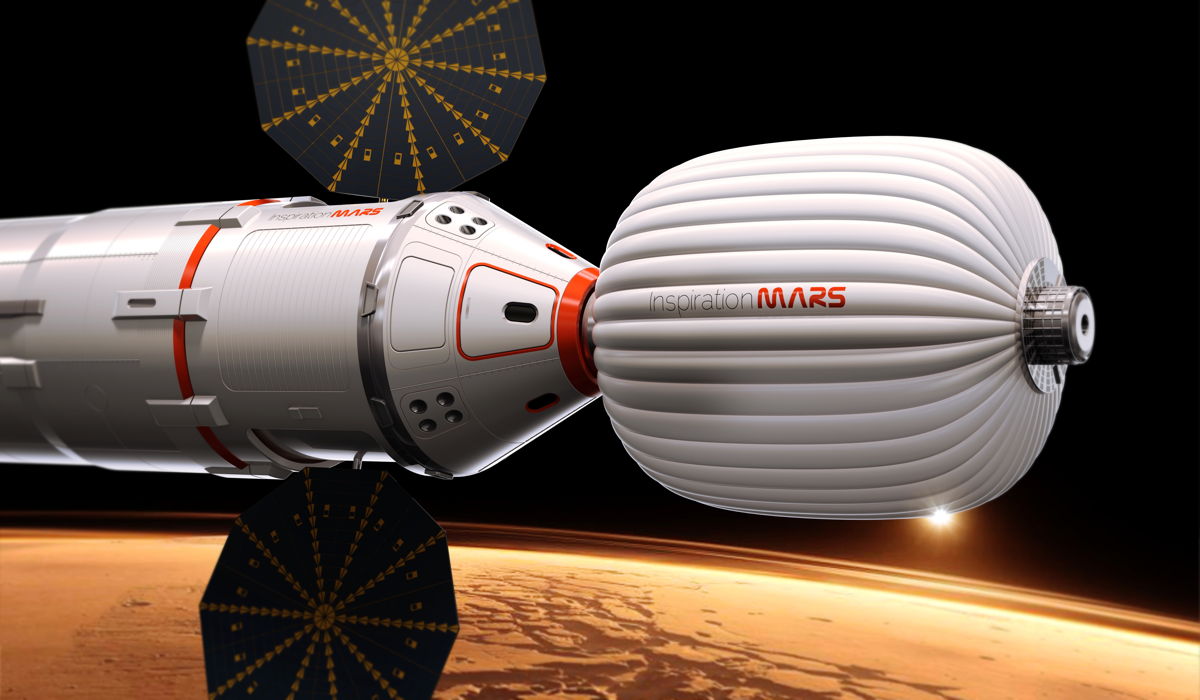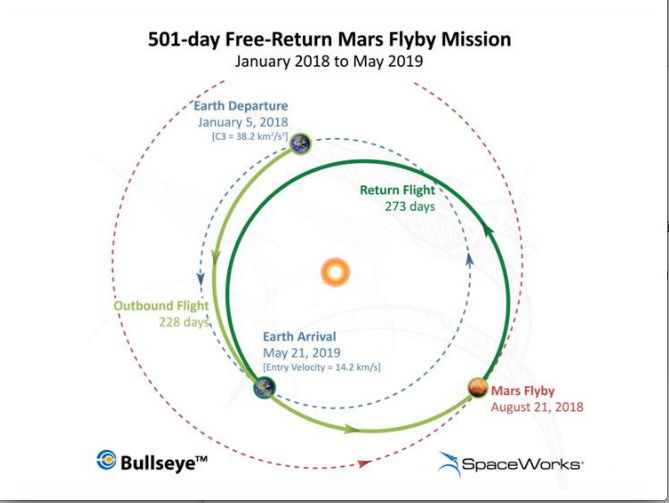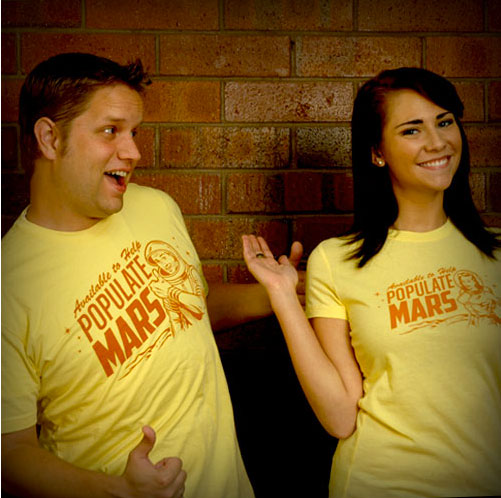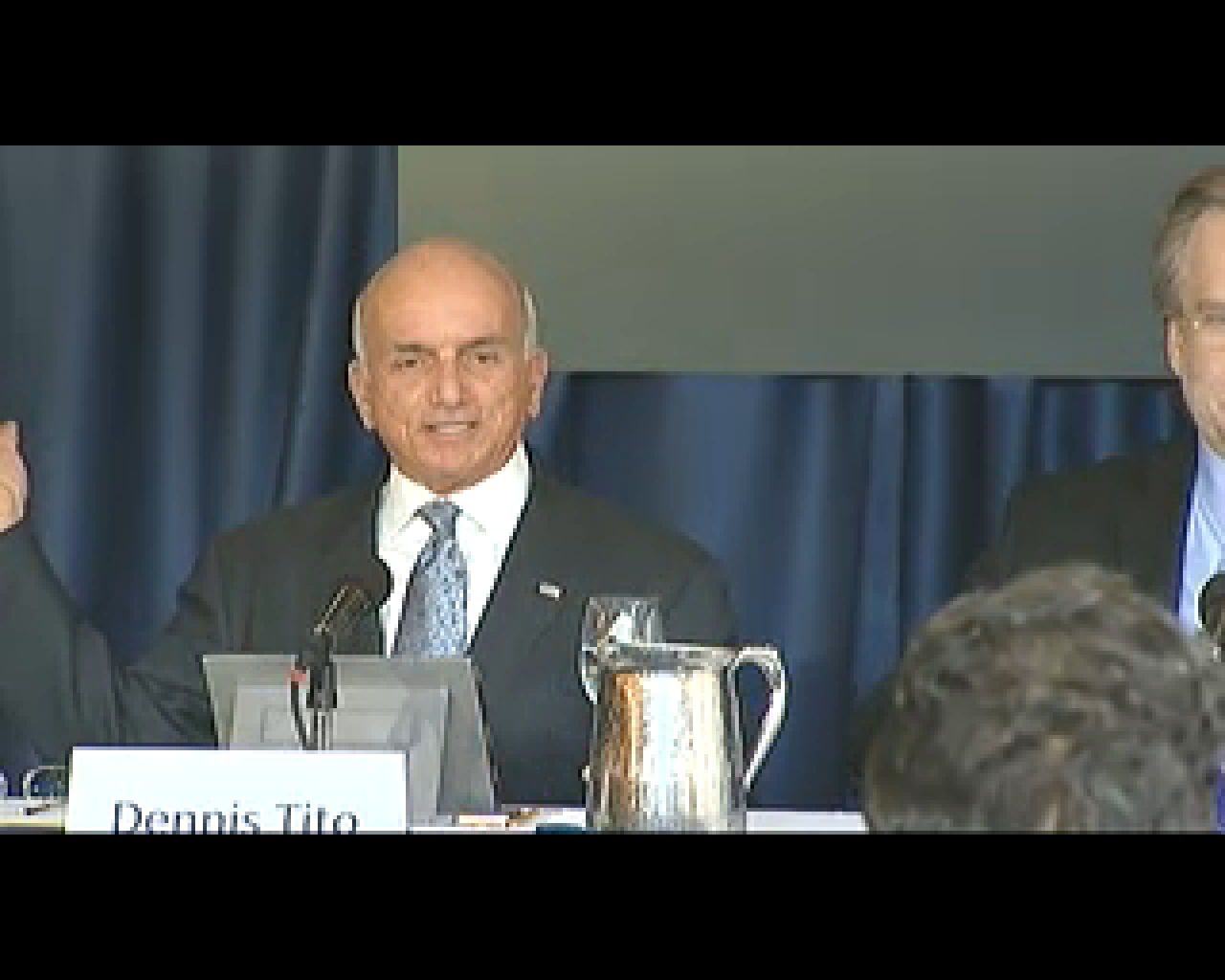Wanted: Married Couple for Private Mars Voyage in 2018

This story was updated at 6:00 p.m. EST.
WASHINGTON — A new nonprofit led by the world's first space tourist is mounting an ambitious plan to launch the first manned mission to Mars in 2018, a voyage that could include an adventurous married crew.
The project, led by American millionaire Dennis Tito — who paid his own way to space in 2001 — aims not to land people on the surface of the Red Planet, but to take advantage of a rare planetary alignment that would allow a relatively easy, quick flyby of Mars.
Tito announced the private Mars voyage plan today (Feb. 27) here at the National Press Club, where he held a press conference to launch his new organization, the Inspiration Mars Foundation, to back the mission.
Tito hopes to choose a space capsule and rocket from among those already on the market, and modify them to carry two people to Mars and back in 501 days.
And to combat the loneliness and isolation that would doubtless set in during such a mission, Tito is proposing something that's never been tried before: sending one male and one female, preferably a married couple.
"When you're out that far and the Earth is a tiny, blue pinpoint, you're going to need someone you can hug," Tito told SPACE.com. "What better solution to the psychological problems you're going to encounter with that isolation?" [9 Mars Mission Questions for Dennis Tito]
Get the Space.com Newsletter
Breaking space news, the latest updates on rocket launches, skywatching events and more!
The mission is designed to capitalize on a launch opportunity that opens in January 2018.
"There are rare opportunities to actually go out to Mars and come back in a relatively short time, about 1.4 years, or 500 or so days," Tito said. "If one misses those opportunities, then typical flight times would be two to three years."
Though he admits the plan faces numerous challenges, Tito says it's doable.
"I've seen others come out with fantasy missions that in no way will actually occur," he said. "I didn't want to fall into that."
Before forming the Inspiration Mars Foundation, Tito gathered a group of scientists and engineers to study the potential mission. He hired Paragon Space Development Corporation, which has expertise in life support systems, and space medicine expert Jonathan Clark of Baylor College of Medicine, to look into what would be needed to keep two crewmembers alive and functional in a small capsule for more than 500 days. [Photos: Private Manned Mars Mission in 2018]
The team used the private Dragon space capsule, built by commercial firm Space Exploration Technologies (SpaceX), as a model, and found that the mission is feasible. There are caveats, however: For one, SpaceX has not yet launched people on the Dragon, only cargo.

Life support
For another, the mission will need novel life support systems and radiation protection technology to keep the crew alive and healthy.
Tito likened the challenges in equipping an existing spacecraft for the mission to outfitting an empty house.
"We can buy the house, but the walls are bare, and there's no furniture," he said.
Unlike the leaders of some private space endeavors, Tito said he doesn't expect to make any money off the expedition.
"This is a philanthropic mission," he said, adding that its primary goal was to inspire the nation with the excitement of space travel, and to test out some of the technologies that will be needed later for a Mars landing voyage."When this mission is completed, I don’t end up with a company. I'll end up a lot poorer actually."

Tito, who started off as an engineer at NASA's Jet Propulsion Laboratory in California, and later made his fortune through an investment company he founded, plans to fund the Inspiration Mars Foundation himself for its first two years. To raise the rest of the necessary funds, including the cost of the rocket and space capsule, Tito hopes to enlist private donations.
Though he acknowledged that the entire project would be challenging, Tito said he was confident that he and his team would be able to pull it off.
"I think this is the real deal," Tito said."It doesn't mean it's not difficult. We've got a long way to go to make it happen. But it's certainly a doable thing. I'm absolutely committed to make this happen."

First space tourist
Tito himself made history in 2001 when he became the first space tourist. He reportedly paid $20 million to the Russian Federal Space Agency for a seat on a Soyuz space capsule bound for the International Space Station. Tito's eight days in space set the stage for six other space tourists to follow him, all through deals with Russia brokered by U.S. firm Space Adventures.
Meanwhile, NASA itself is chasing Mars, with a new space capsule called Orion and a new heavy-lift rocket called the Space Launch System (SLS) in development to carry astronauts beyond low-Earth orbit. The space agency has said it hopes to land people on Mars by the mid 2030s.
NASA officials voiced enthusiasm about Inspiration Mars' plans, saying the manned mission is in keeping with the Obama Administration's goal of encouraging American private spaceflight capabilities.
"It's a testament to the audacity of America's commercial aerospace industry and the adventurous spirit of America's citizen-explorers," NASA spokesman David Steitz said in a statement. "NASA will continue discussions with Inspiration Mars to see how the agency might collaborate on mutually beneficial activities that could complement NASA's human spaceflight, space technology and Mars exploration plans."
Other private outfits, such as the Dutch company Mars One, also hope to mount the first mission to the Red Planet. Mars One aims to land people on the planetin 2023, and eventually to establish a long-term colony there.
Follow Clara Moskowitz on Twitter @ClaraMoskowitz or SPACE.com @Spacedotcom. We're also on Facebook & Google+.
Join our Space Forums to keep talking space on the latest missions, night sky and more! And if you have a news tip, correction or comment, let us know at: community@space.com.

Clara Moskowitz is a science and space writer who joined the Space.com team in 2008 and served as Assistant Managing Editor from 2011 to 2013. Clara has a bachelor's degree in astronomy and physics from Wesleyan University, and a graduate certificate in science writing from the University of California, Santa Cruz. She covers everything from astronomy to human spaceflight and once aced a NASTAR suborbital spaceflight training program for space missions. Clara is currently Associate Editor of Scientific American. To see her latest project is, follow Clara on Twitter.









